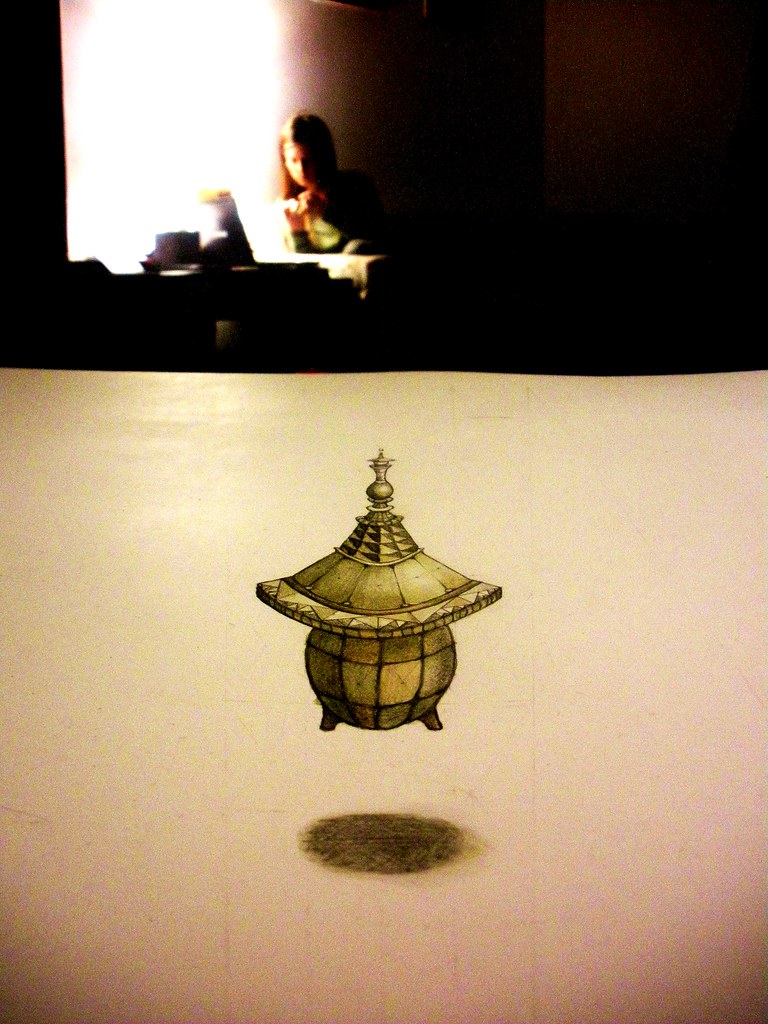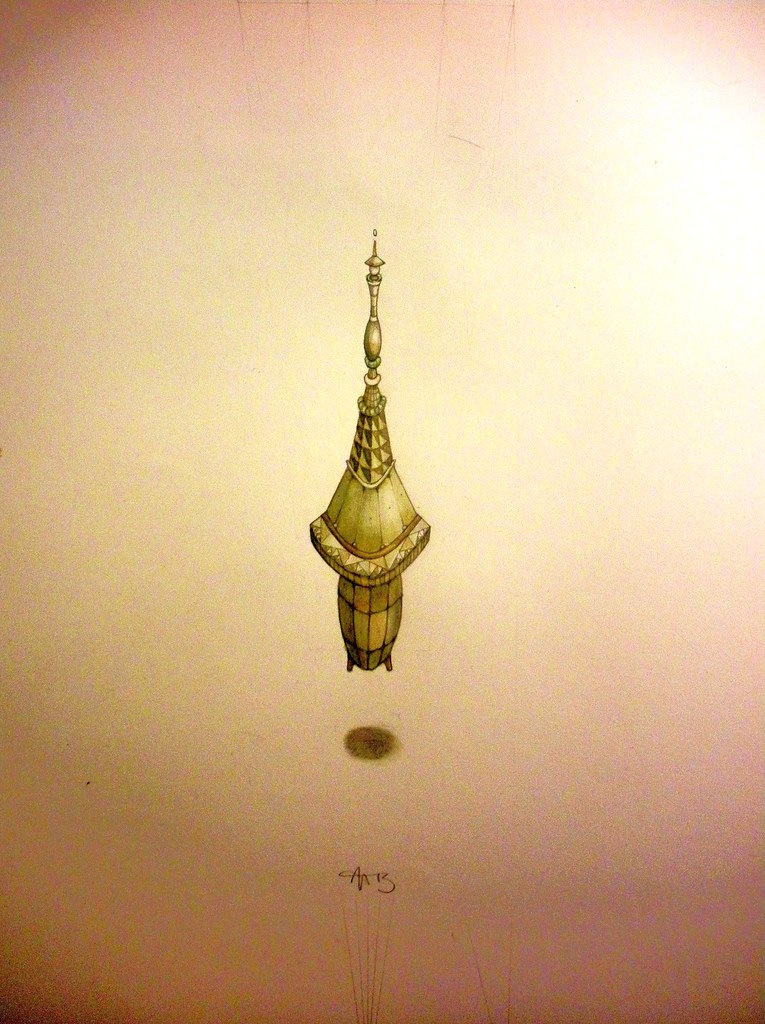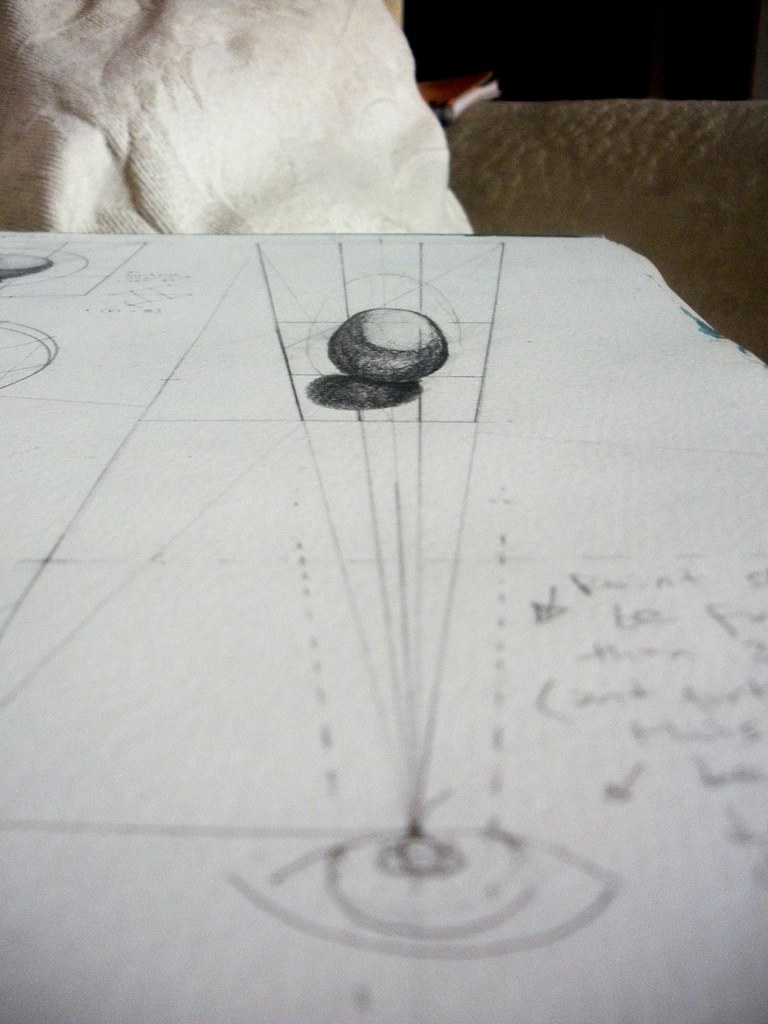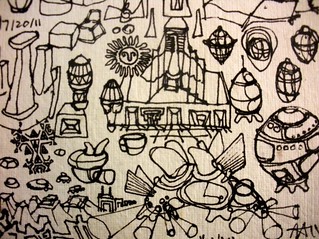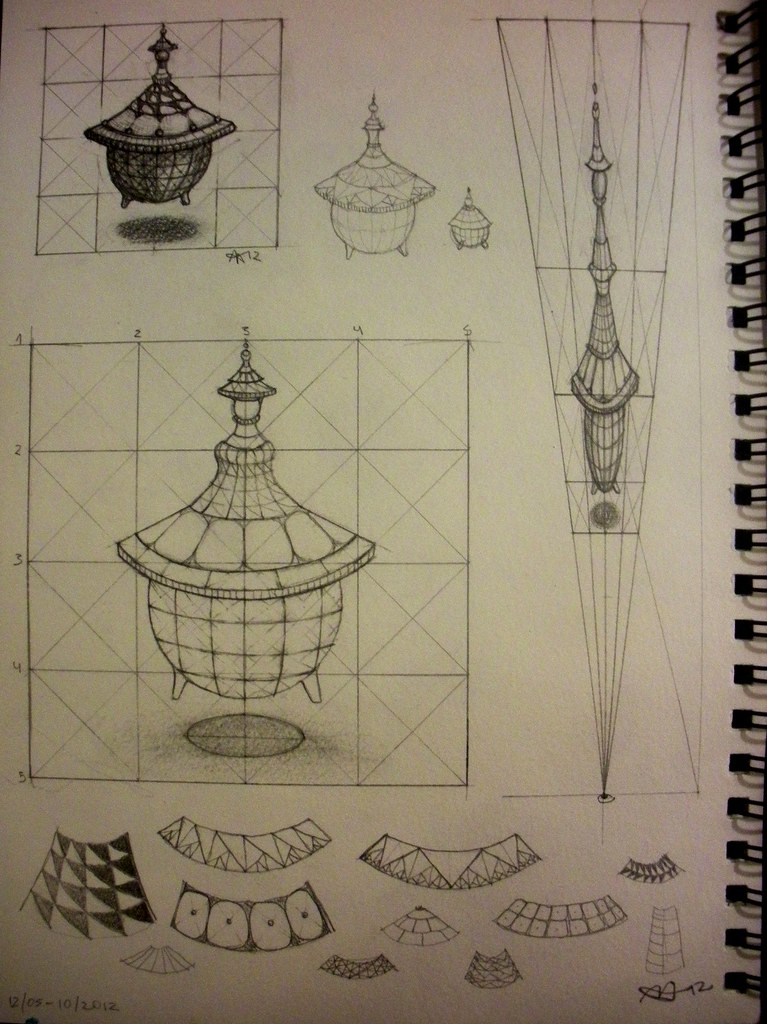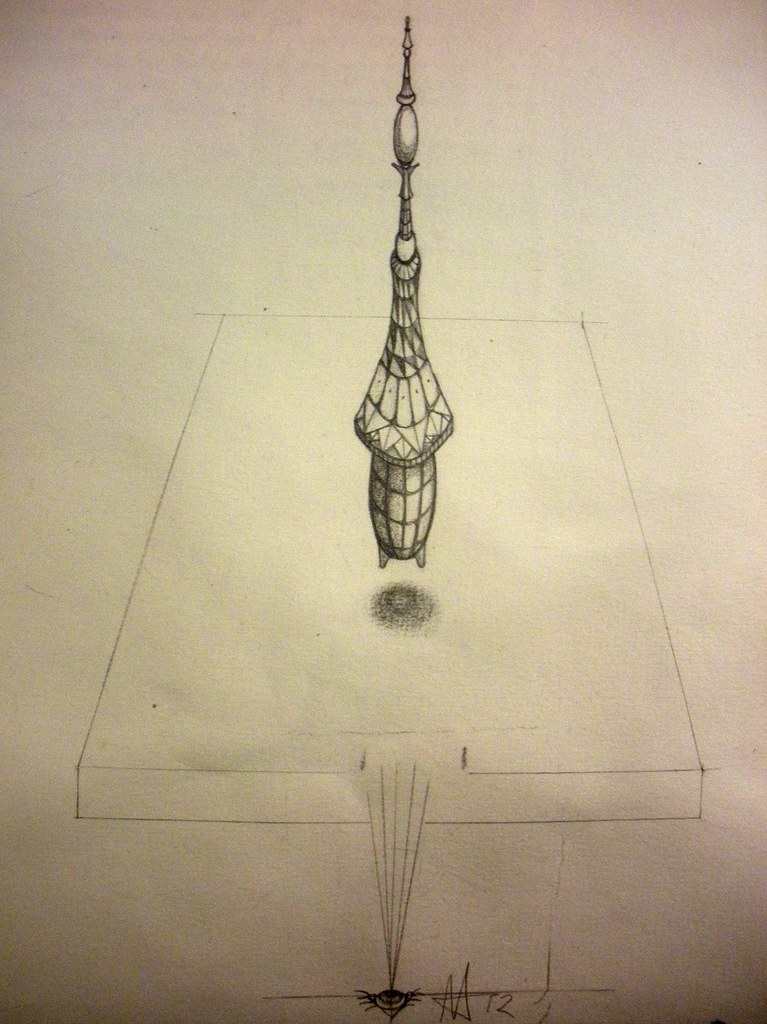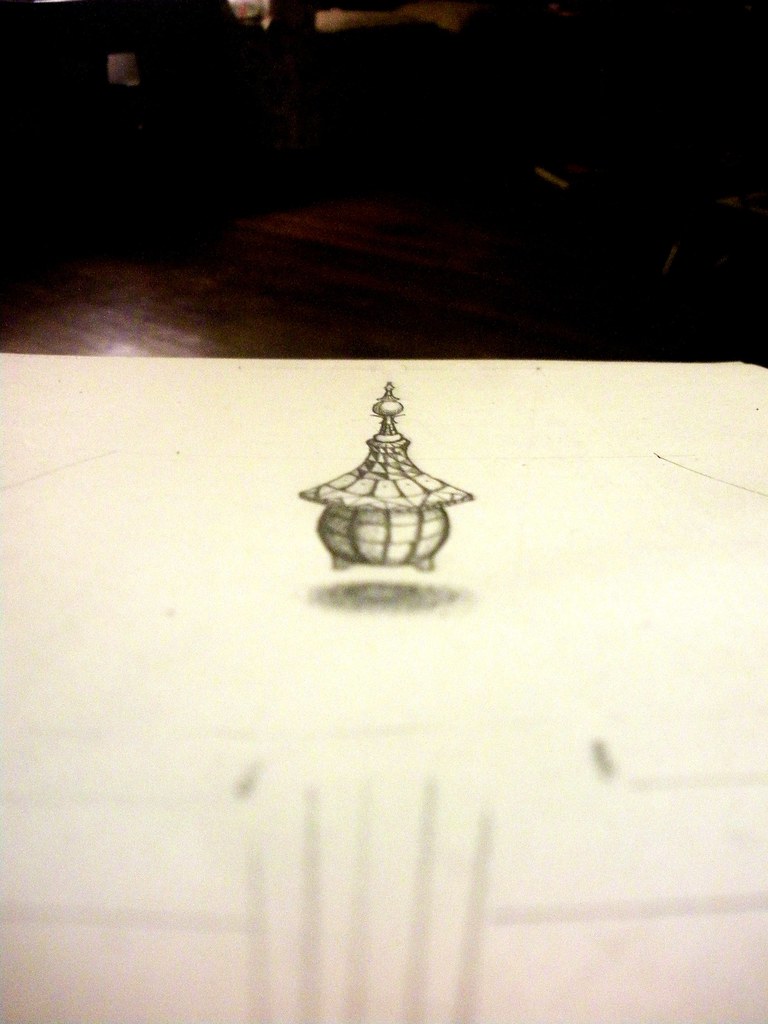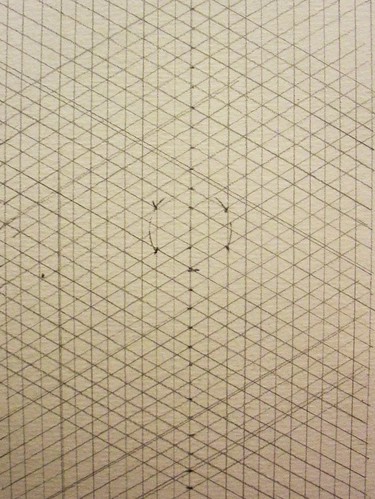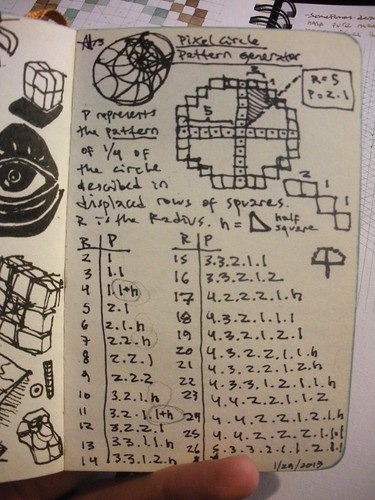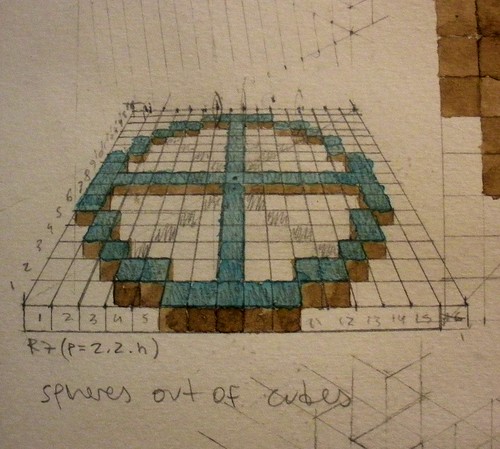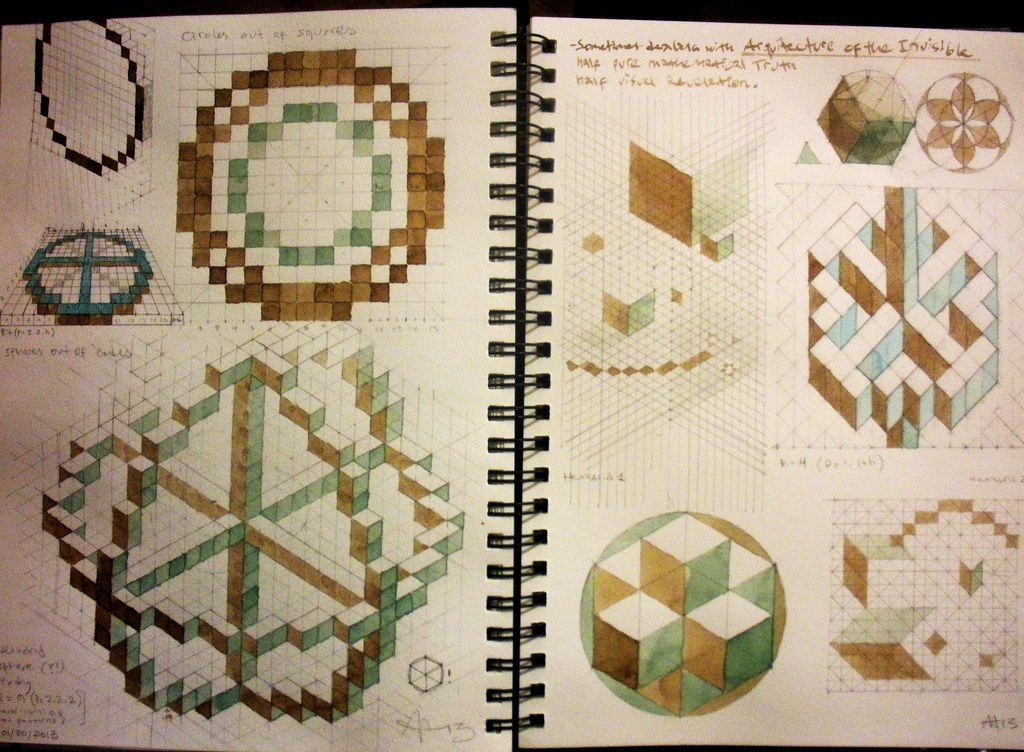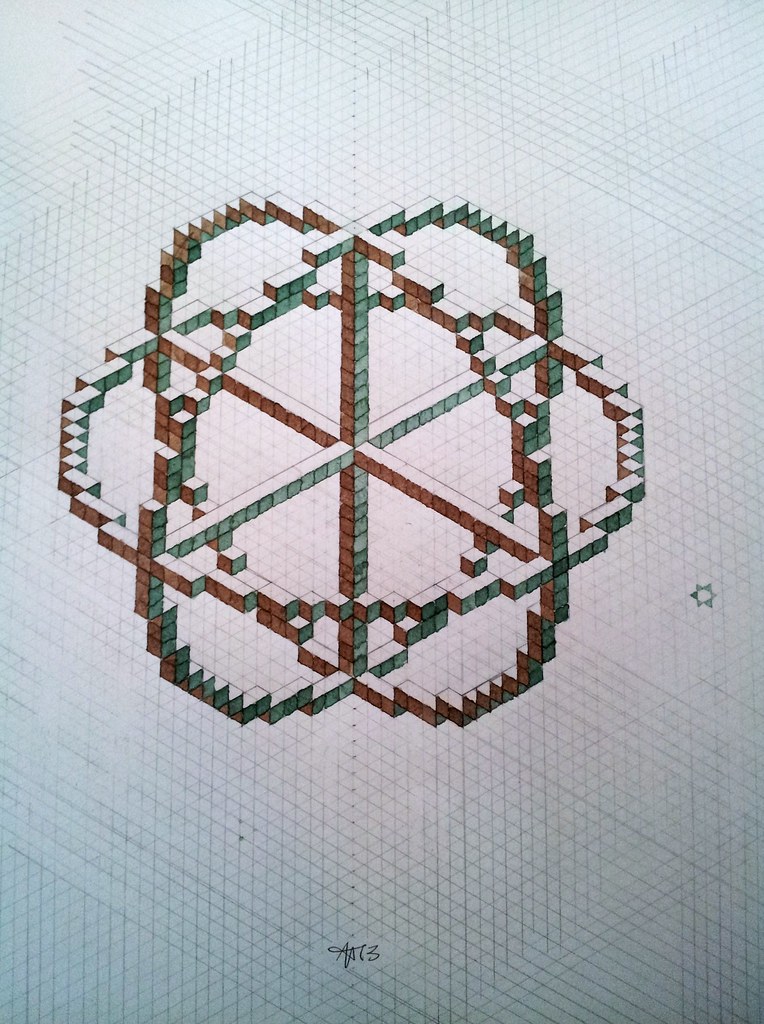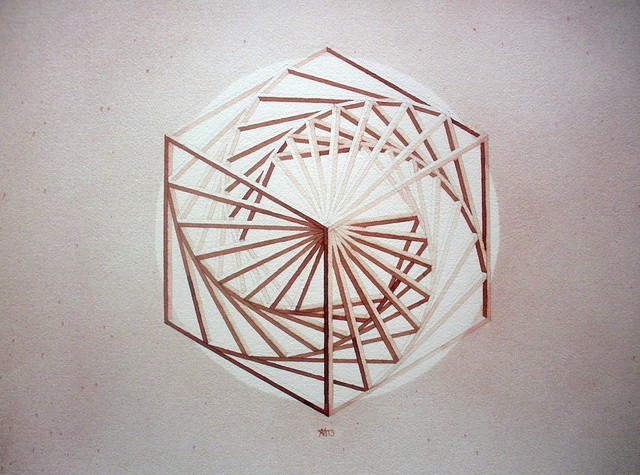
"Eight Spiraling Cubes"
Compass and straightedge, pencil and Mahogany ink on paper.
Oct x-Nov 10, 2013
AA13
This drawing contains no real curves, only straight lines. Each cube is embedded inside the other as they turn inwards becoming ever so smaller. Is this two-dimensional figure possible in three dimensions?
Unsure on how to answer that myself, I thought I would instead share a few process sketches, and a couple of heart-felt thoughts I wrote down during the different windows of time I spent creating this piece.
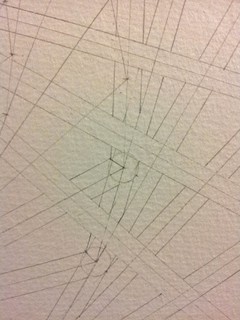
October 12: "Just when I had thought a drawing would be so simple, I find myself working on the biggest challenge I have ever attempted. It is so hard, to the point where I start to think I just won't be able to do it, and I seriously consider giving up.
But then, a sort of creative curiosity kicks in: how would I ever find out if this seemingly impossible endeavor is simply out of reach altogether, or if it is just a little further than I could imagine?"

October 12: "The world is resplendent with order and beauty. To this we are all still beginners, as there are infinite further layers of significance to unveil"

November 6: "Life is the unending work in progress"
Hey, thanks for lending an ear!
;)
AA13




